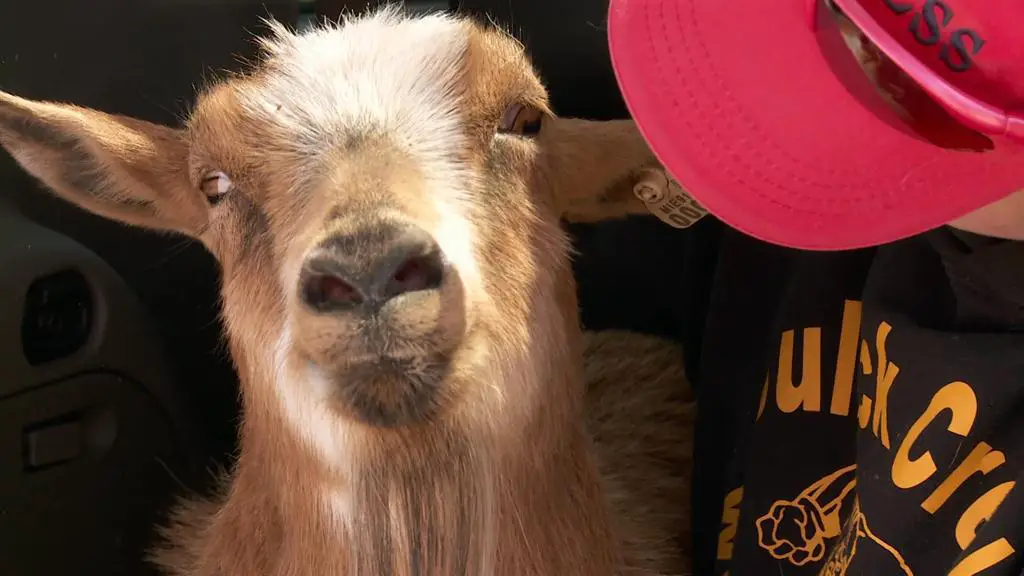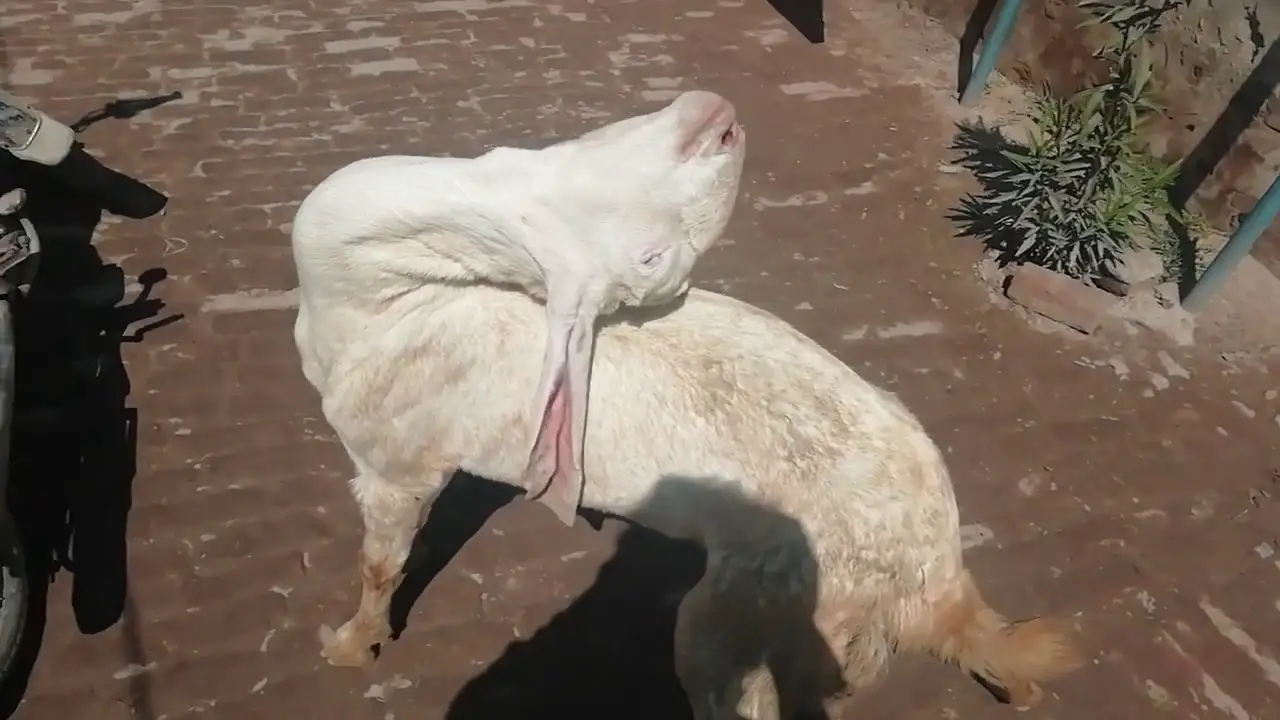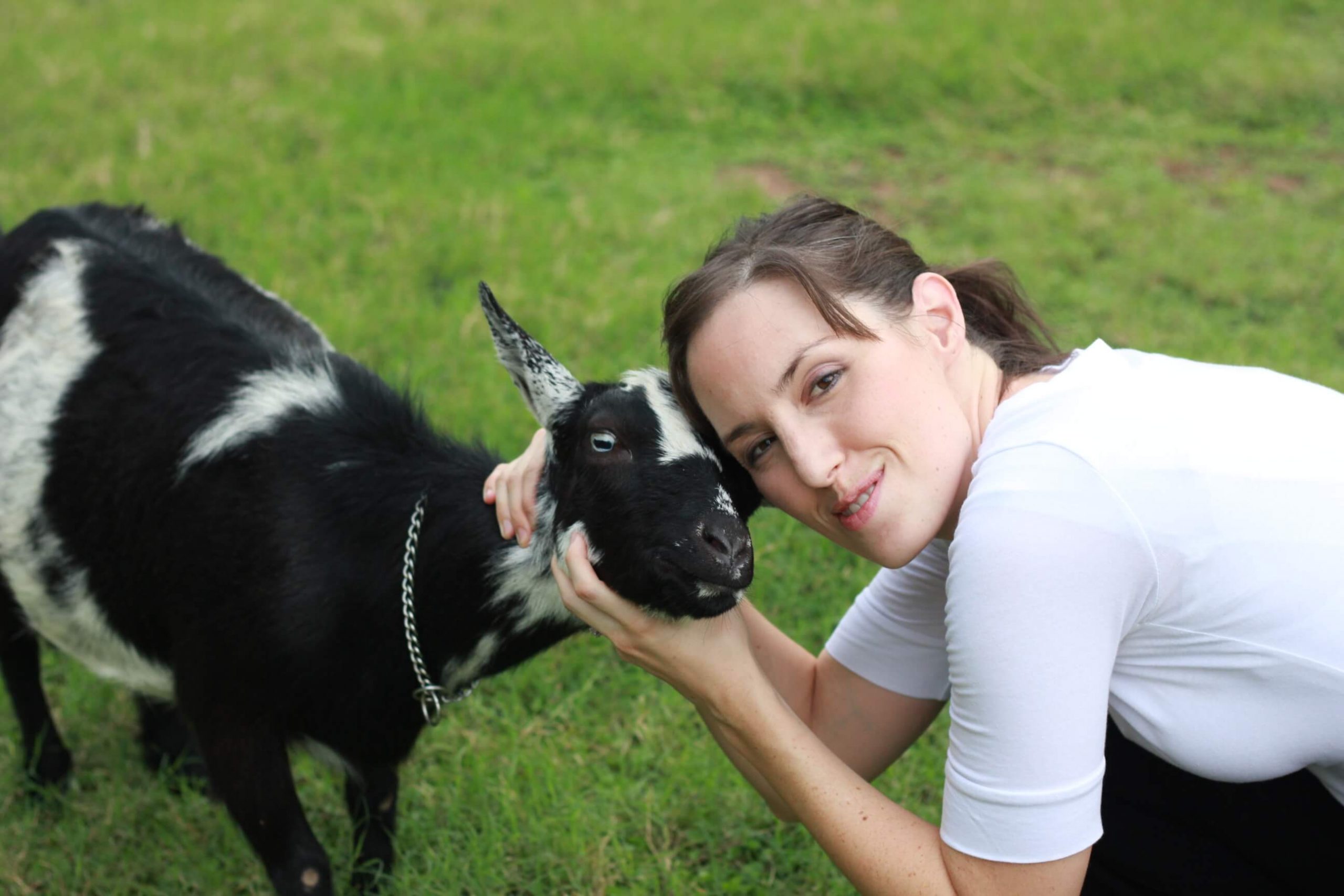
Goat polio is a nutritional and metabolic disease that mainly affects the ruminants, including goats. This disease is more common in the areas where there are intensive management conditions and goats fed on more concentrated feed to make the goats overgrow.
Polioencephalomalacia is the official name for the disease known commonly as Goat Polio. It should be noted that Goat Polio is a nutritional deficiency, and has nothing in common with the disease polio in humans.
Table of contents
The primary issue of this disease is either the deficiency of thiamine (Vitamin B1) or sulfur toxicity. The reduction in the activity of thiamine causes the death of the brain cells, and there will be an accumulation of fluid in the cells and tissue of the brain.
What Causes Goat Polio?
The bacteria in the rumen of goats usually produce thiamine or Vitamin B1. Any alternation in the environment of the rumen may lead to the reduction of thiamine production in the rumen. Typically, something may upset the processing of food intake, and that results in goat polio.
Other causes of goat polio include overfeeding of the grains, improper feeding, or anything that disrupts the health and well being of the bacteria in the rumen, such as acidosis or indigestion.
How Long Do Goats Survive When They Have Polio
The goat will not survive the outbreak of polio if remained untreated. The untreated goat will die with 24-72 hours of the initial signs. However, if the goats get early treatment, then there are good chances of making a complete recovery from the disease.
Polio Goat Symptoms

The deficiency of thiamine or higher sulfur level may cause damage to the brain cells and the accumulation of the fluid in the brain then diagnosed through the histological examination.
Polio can affect goats of all ages, but it more often occurs in the young goats when transitioning from milk to solid feed or when fed on high concentrates. As it can affect animals of all age and any sex may suffer from this disease, the signs and symptoms remain the same regardless of gender and age.
The Polio in goats can be acute (rapid onset of the signs) or sub-acute (less rapid as compared to acute symptoms). The acute form of polio has signs of blindness, seizure, recumbency, and coma. The animals suffering from signs of acute form of polio, usually respond poorly to the treatment and the death rate is quite higher.
Sub-Acute: – The animals suffering from a sub-acute form of polio will isolate them from the entire herd, and they will stop consuming any feed with twitching ears and face. There will be an erection of the head in the goats with sub-acute form. There will be the onset of the blindness but these animals may respond to the light. Early blindness can cause uncontrolled body within hours to a day. The goats will be unable to control their movement. As the disease progresses, the animal will stop responding to the light, will start press the head against a hard object, and begins to grind the teeth.
The sub-acute form will develop to severe form of the disease where there will be seizures and recumbency of the animals. The survival of the acute or sub-acute form of polio will remain effected with the neurological factors, and it becomes necessary to the cull the animal.
The list of signs and symptoms of polio in goats include: –
- Star-grazing
- Excitability
- Uncontrolled walk
- Circling
- Diarrhea
- Tremors of the muscles
- Blindness
- Convulsions
- High fever, pulse rate, and respiration
- Seizures
- Teeth grinding
How to Test Polio in Goats?

The clinical signs make it easy to suspect polio in goats. When the animal died, the area of the brain is observed under the ultraviolet illumination to have a possible diagnosis. There are lesions in the brain that will confirm the presence of Polio in goats.
It is difficult to assess the thiamine status in goats, and the result may get interpreted with caution. There are only a few laboratories that can measure the content of thiamine in tissue and blood. If the causative agent is sulfur toxicity, then it is a bit easier to measure the sulfur level in the water, and the feed consumed.
The maximum level of sulfur intake depends on the type of feed. For instance, a diet with more than 85% concentrate, the tolerable sulfur level will be 0.3% of dry matter. For the feed consisting more than 45% forages, the acceptable sulfur level will be 0.5% od dry matter.
The diagnosis of the Polio in goats is usually based on the history of the management, signs, and laboratory analysis. The laboratory may conduct tests will analyse the level of thiaminase, level of lactate, pyruvate level in urine and blood. The activity level of transketolase is usually lower in the goats that get the polio disease.
- These are all enzymes that are required by the goats for metabolism
The polio is goats should have a differential diagnosis (eradicate chances of other diseases). The differential diagnosis includes pregnancy toxaemia, enterotoxemia, listeriosis, Caprine arthritis encephalitis, grain poisoning, rabies, plant poisoning, tetanus and other metabolic diseases.
Goat Polio Treatment
The response of the treatment based on the condition and development of the brain lesions. It is important that you contact your vet as soon as possible. Veterinarians who work on goats are very familiar with goat health problems. Always consult yourveterinarian regarding your goat’s health. In the early onset of the disease, the goats will respond to the procedure. The ideal treatment for polio in goats is the administration of thiamine at the dose of 10mg/kg thrice a day.
The initial dose of thiamine must be slow intravenous, as there are chances of animal’s collapse if not given slowly. The subsequent doses must administer intramuscular for 3-5 days: early the treatment, better the chances of animal survival. If the therapy gets delayed, then it is quite challenging to have a full clinical recover goat.
The recovery signs may appear within 24 hours of the treatment or sooner. Administration of steroids, like dexamethasone, at the dose rate of 1-2mg/kg, in muscles or under the skin, will help to reduce the fluid accumulation in the brain. If the recovery is not as expected, then better to continue the treatment for more than three days.
There should be sufficient access for the animals to the roughages in the outbreak of polio. If the polio is due to the sulfur toxicity, all the sulfur sources should get analysed like water, consumed dry matter, etc.
Any feed having high sulfur content must keep away in the outbreak of polio. If it is not possible, then a gradual introduction of the goats to the new environment may enhance the chances of flourishing adaption.
Goat Polio Recovery
Complete recovery from the goat polio is possible. However, the key to the rescue is early diagnosis and early treatment. Once the goat gets fully recovered, try to reduce the intake of high grains while elevating the use of roughages and try to prevent the use of mouldy grains and hay.
Avoid introducing a sudden diet change to the goats and monitoring to check and balance the overfeeding. Try to provide a diet that has a sufficient level of thiamine in it. The sulfur level must be in control and monitor the level of sulfur in the feed as well in the water. Observe the animals after de-worming.
Is Goat Polio Contagious to Human?
Goat polio is a nutritional disease of goats that is neither a contagious disease (i.e. spread from one goat to other) nor a zoonotic disease (transmission from goat to humans). It is a disease caused by the deficiency of thiamine or Vitamin B1.
References:




